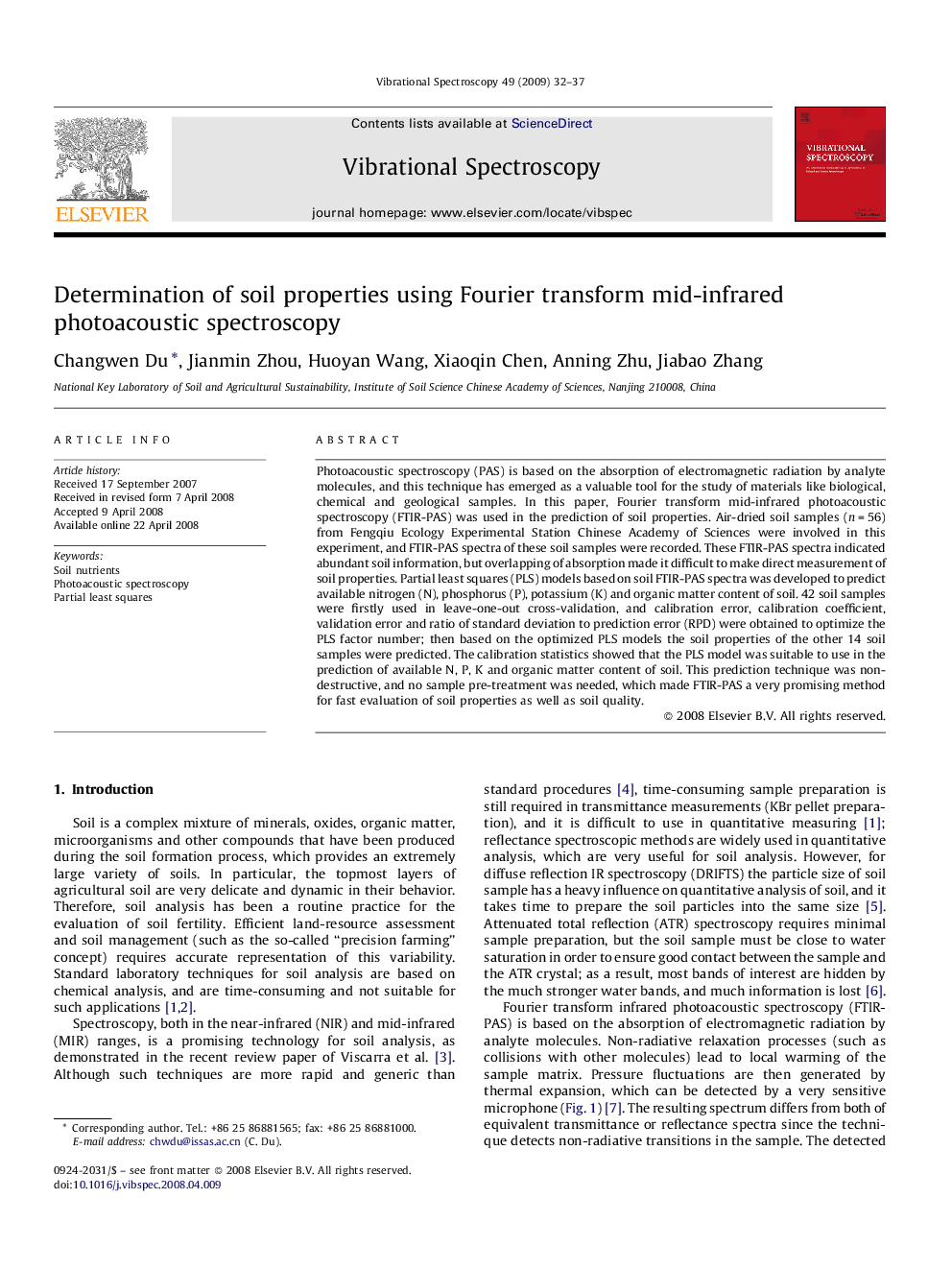| Article ID | Journal | Published Year | Pages | File Type |
|---|---|---|---|---|
| 1250845 | Vibrational Spectroscopy | 2009 | 6 Pages |
Photoacoustic spectroscopy (PAS) is based on the absorption of electromagnetic radiation by analyte molecules, and this technique has emerged as a valuable tool for the study of materials like biological, chemical and geological samples. In this paper, Fourier transform mid-infrared photoacoustic spectroscopy (FTIR-PAS) was used in the prediction of soil properties. Air-dried soil samples (n = 56) from Fengqiu Ecology Experimental Station Chinese Academy of Sciences were involved in this experiment, and FTIR-PAS spectra of these soil samples were recorded. These FTIR-PAS spectra indicated abundant soil information, but overlapping of absorption made it difficult to make direct measurement of soil properties. Partial least squares (PLS) models based on soil FTIR-PAS spectra was developed to predict available nitrogen (N), phosphorus (P), potassium (K) and organic matter content of soil. 42 soil samples were firstly used in leave-one-out cross-validation, and calibration error, calibration coefficient, validation error and ratio of standard deviation to prediction error (RPD) were obtained to optimize the PLS factor number; then based on the optimized PLS models the soil properties of the other 14 soil samples were predicted. The calibration statistics showed that the PLS model was suitable to use in the prediction of available N, P, K and organic matter content of soil. This prediction technique was non-destructive, and no sample pre-treatment was needed, which made FTIR-PAS a very promising method for fast evaluation of soil properties as well as soil quality.
